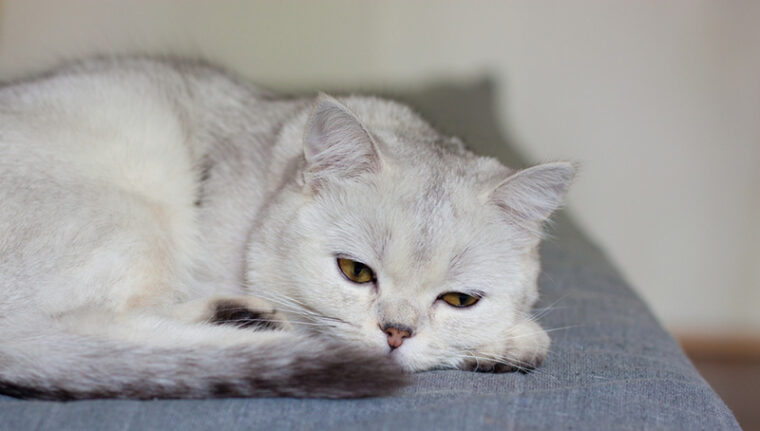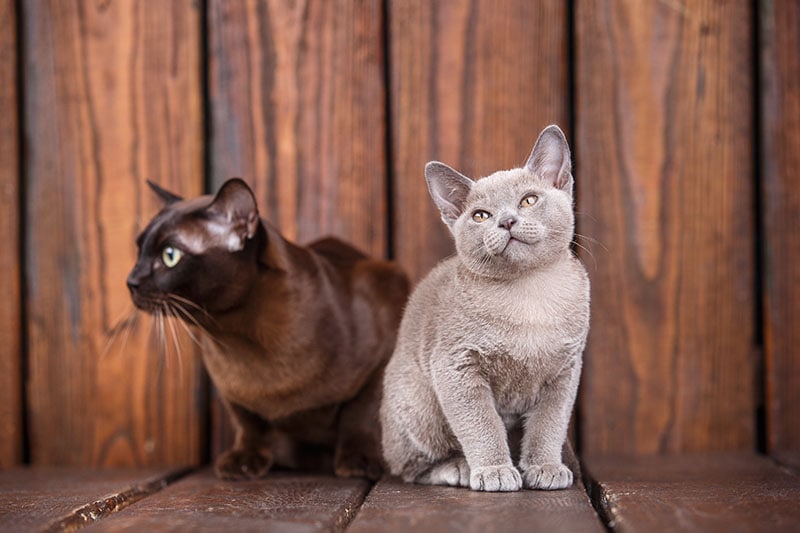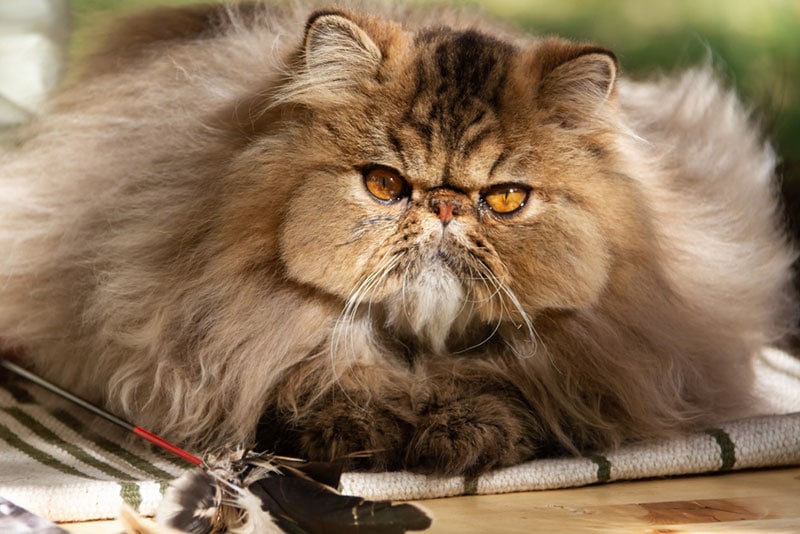
Click to Skip Ahead
Did you know that there is a technical term to describe cats with squished faces? Vets refer to these breeds as brachycephalic. These breeds are exceptionally cute, with personalities to match. However, they also have specific breed-related health issues that owners, or prospective owners, should be aware of. The biggest of these issues is brachycephalic airway syndrome. This is a condition in which affected cats have difficulty breathing due to their abnormal and compressed facial anatomy.
Read on below to find out more.

What Is Brachycephalic Airway Syndrome in Cats?
When cats have brachycephalic airway syndrome (also called brachycephalic obstructive airway syndrome, or BOAS), they have a number of upper respiratory abnormalities that make breathing more difficult than it should be. These abnormalities include:
This combination of features reduces the cat’s ability to inhale or breathe in air. As oxygenation of tissues is vital for almost all bodily functions, these cats can have both acute and chronic breathing issues. As a side note, brachycephalic cats are also more likely to have eye and dental problems, and this is also attributed to their unusual and squished faces.
While some breeds of cats naturally have more compressed faces than others, most of the issues associated with BOAS can be attributed to poor breeding and breeding standards. In a desire to achieve an increasingly squished face for aesthetic or cosmetic reasons, the health of these breeds has been compromised. The most common brachycephalic breeds of cat include:

What Are the Signs of Brachycephalic Airway Syndrome in Cats?
Signs of BOAS in cats are mostly related to difficulty breathing. Cats with chronic signs of BOAS experience:
In some cases, cats may have an acute and severe “obstructive episode”, in which breathing becomes extremely compromised. This may be due to heat exhaustion, stress, or swelling in the mouth. These cats may collapse or faint, appear hot to touch, and be very dehydrated; urgent veterinary attention is necessary.
What Are the Causes of Brachycephalic Airway Syndrome in Cats?
The cause of BOAS in cats is genetic. In breeding for the smooshed facial appearance, brachycephalic cats are born with abnormal compressed facial anatomy, which reduces the ability to breathe. More specifically, these anatomical features include narrow nostrils, a long soft palate, and a small trachea (windpipe).
Sudden episodes of collapse or heatstroke may be caused by overexertion, exposure to hot conditions for too long, dehydration, or issues causing swelling in the mouth.

How Do I Care for a Cat with Brachycephalic Airway Syndrome?
There are three main things owners of brachycephalic cats should do to take the best care of their feline companions:
What Are the Treatment Options for Brachycephalic Airway Syndrome?
Other than the “at-home” care guidelines mentioned above, some severe cases of BOAS in cats may warrant more advanced veterinary intervention. Surgical and laser procedures can be performed to widen or “open up” the nostrils, as well as remove excess soft tissue in the mouth. These procedures are intensive, and complication rates should always be discussed with your veterinarian.
Cases of acute, life-threatening airway obstruction will require sedation, oxygenation, fluids via a drip, and often medications. This can involve a lengthy hospital stay.

Frequently Asked Questions
Are Cats with Brachycephalic Airway Syndrome in Pain?
Brachycephalic cats do not experience pain. However, it is reasonable to assume that they live with some degree of discomfort due to the constant effort required for breathing. This can still be detrimental to their quality of life, even if they are not experiencing overt pain.

What is the Prognosis for Cats with Brachycephalic Airway Syndrome?
The prognosis for cats with BOAS is good, especially if they can be kept at a good body weight, and their home environment well managed to maximize their comfort. Cats that present with an acute, severe obstructive episode have a poorer prognosis.

Conclusion
Despite their adorable looks and charming character, brachycephalic breeds of cats require special care. While most cats live happy and healthy lives, chronic breathing issues are common. Some cats may just snore and breathe audibly, but other cats may suffer more severely labored breathing. At-home care is important, and prompt veterinary intervention is recommended if you have any concerns about your cat’s health.
Featured Image Credit: stokerolga, Shutterstock






